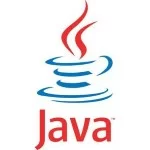Temporal.io for Java Microservices Workflows
Temporal.io is an open-source workflow orchestration platform that enables developers to build resilient applications by managing long-running business processes and workflows. In Java-based microservices architectures, Temporal provides a powerful solution for coordinating distributed tasks while handling failures, retries, and state management automatically.
1. Key Benefits of Using Temporal in Java Microservices
- Reliable Execution: Temporal ensures workflow progress even through failures
- Durability: Workflow state is persisted and recoverable
- Visibility: Built-in observability for workflow execution
- Scalability: Horizontal scaling of workflow workers
- Developer Productivity: Focus on business logic rather than infrastructure concerns
2. Core Temporal Concepts in Java
1. Workflows
The core business logic that defines your long-running process:
01 02 03 04 05 06 07 08 09 10 11 12 13 14 15 16 | public interface OrderFulfillmentWorkflow { @WorkflowMethod void processOrder(Order order);}public class OrderFulfillmentWorkflowImpl implements OrderFulfillmentWorkflow { private final OrderActivities activities = Workflow.newActivityStub(OrderActivities.class); @Override public void processOrder(Order order) { activities.validateOrder(order); activities.processPayment(order); activities.prepareShipping(order); activities.sendConfirmation(order); }} |
2. Activities
Discrete units of business logic that can fail and need retries:
01 02 03 04 05 06 07 08 09 10 11 12 13 | public interface OrderActivities { @ActivityMethod void validateOrder(Order order); @ActivityMethod void processPayment(Order order); @ActivityMethod void prepareShipping(Order order); @ActivityMethod void sendConfirmation(Order order);} |
3. Workers
Processes that host workflow and activity implementations:
01 02 03 04 05 06 07 08 09 10 11 | public class OrderWorker { public static void main(String[] args) { WorkerFactory factory = WorkerFactory.newInstance(client); Worker worker = factory.newWorker(TASK_QUEUE); worker.registerWorkflowImplementationTypes(OrderFulfillmentWorkflowImpl.class); worker.registerActivitiesImplementations(new OrderActivitiesImpl()); factory.start(); }} |
3. Implementing Resilient Workflows in Java
Handling Long-Running Operations
01 02 03 04 05 06 07 08 09 10 11 12 13 14 15 16 17 18 19 20 21 | public class OrderFulfillmentWorkflowImpl implements OrderFulfillmentWorkflow { // ... @Override public void processOrder(Order order) { // Async execution with retry options ActivityOptions options = ActivityOptions.newBuilder() .setStartToCloseTimeout(Duration.ofMinutes(10)) .setRetryOptions(RetryOptions.newBuilder() .setInitialInterval(Duration.ofSeconds(1)) .setMaximumInterval(Duration.ofMinutes(1)) .build()) .build(); OrderActivities activities = Workflow.newActivityStub(OrderActivities.class, options); // Execute activities activities.validateOrder(order); // ... }} |
Saga Pattern Implementation
01 02 03 04 05 06 07 08 09 10 11 12 13 | @Overridepublic void processOrder(Order order) { try { activities.reserveInventory(order); activities.processPayment(order); activities.shipOrder(order); } catch (ActivityFailure e) { // Compensation logic activities.cancelPayment(order); activities.releaseInventory(order); throw e; }} |
Temporal Features for Complex Workflows
- Signals: External events that can affect workflow execution
1 2 3 4 5 6 7 8 | @WorkflowInterfacepublic interface OrderWorkflow { @WorkflowMethod void process(Order order); @SignalMethod void updateShippingAddress(String newAddress);} |
2. Queries: Inspect workflow state
1 2 3 4 5 6 | @WorkflowInterfacepublic interface OrderWorkflow { // ... @QueryMethod OrderStatus getStatus();} |
3. Timers: Time-based workflow control
1 | Workflow.sleep(Duration.ofHours(24)); // Wait for 24 hours |
4. Deployment Considerations for Java Microservices
Worker Deployment Strategies
- Dedicated Worker Services: Separate microservices for workflow execution
- Sidecar Pattern: Workers co-located with business services
- Hybrid Approach: Combination of dedicated and embedded workers
Configuration Best Practices
1 2 3 4 5 6 7 8 9 | // Worker configuration exampleWorkerFactoryOptions factoryOptions = WorkerFactoryOptions.newBuilder() .setMaxWorkflowThreadCount(200) .build();WorkerOptions workerOptions = WorkerOptions.newBuilder() .setMaxConcurrentActivityExecutionSize(100) .setMaxConcurrentWorkflowTaskExecutionSize(50) .build(); |
5. Monitoring and Observability
Temporal provides built-in visibility tools:
- Web UI: View workflow execution history and status
- Metrics Integration: Prometheus, StatsD, etc.
- Logging: Correlated logs across workflows and activities
1 2 3 | // Custom logging in workflowsWorkflow.getLogger(OrderFulfillmentWorkflowImpl.class) .info("Processing order {}", order.getId()); |
6. Performance Considerations
- Activity Polling Tuning: Adjust poller thread count and interval
- Workflow Cache Sizing: Configure appropriate cache sizes
- Payload Size Management: Use compression for large payloads
7. Conclusion
Temporal.io provides Java developers with a robust framework for orchestrating microservices workflows that are:
- Reliable: Automatic retries and failure handling
- Maintainable: Clear separation of workflow logic
- Scalable: Distributed execution across services
- Observable: Built-in monitoring capabilities
By adopting Temporal in your Java microservices architecture, you can significantly reduce the complexity of managing long-running processes while improving system resilience and developer productivity.



